Legal Malpractice in Criminal Cases: A Claim Rarely Proved
The New York Law Journal by Barry Kamins - February 6, 2012
Legal malpractice claims against attorneys have been documented as early as the 15th century.1 Despite its early roots in the English Common Law, there has been a dearth of litigation alleging professional negligence in the defense of a client accused of a crime.2 Indeed, the New York Court of Appeals has acknowledged that criminal malpractice cases are "unique."3 In New York, a specific pleading requirement, discussed below, essentially bars legal malpractice actions against defense counsel in the overwhelming majority of criminal matters, so much so, that it is fair to say a successful claim of legal malpractice in a criminal case must be viewed as a rarity. The basic elements of a legal malpractice claim have remained constant through the years.4 In order to establish a prima facie case of legal malpractice, a plaintiff must first demonstrate that the attorney failed to exercise the ordinary reasonable skill and knowledge commonly possessed by a member of the legal profession.5 For example, in Meralla v. Goldenberg,6 the Appellate Division, First Department, recently rejected a claim of legal malpractice when the plaintiff claimed that the Legal Aid Society had been negligent based on the delay in prosecuting the appeal of the plaintiff's conviction. The first trial resulted in a conviction which was reversed. A retrial in 1990 also resulted in a conviction. However, the second conviction was later reversed in 1996 on the ground that certain factual issues at the second trial should not have been re-litigated based upon collateral estoppel. The court found that the delay in prosecuting the appeal did not represent a failure by counsel to exercise ordinary reasonable skill. Rather, it was attributable to the preparation of the motion to vacate the judgment of conviction, which was complicated by, among other things, the fact that two murder trials were at issue.
In attempting to establish that criminal defense counsel has failed to demonstrate ordinary and reasonable skill, the plaintiff in a legal malpractice claim may allege that his or her conviction was reversed because trial counsel was found to be ineffective.7 Further, plaintiff may raise the argument that the finding of ineffectiveness in the criminal matter should collaterally estop the attorney-defendant in the malpractice case from alleging that he or she used reasonable skill. That argument has been rejected. In Gersten v. Senkowski,8 a federal district court judge concluded that the defendant was denied the effective assistance of counsel at his state trial, reversed the conviction and directed that the defendant be released unless new state criminal proceedings were commenced within 60 days. When the state elected not to pursue charges, the indictment was dismissed. The defendant then brought an action for legal malpractice, arguing that the finding of ineffectiveness should be given preclusive effect under the doctrine of collateral estoppel. In rejecting that argument, the Supreme Court, New York County, noted that a party may only invoke the doctrine of collateral estoppel if the issue is identical in both actions, and if the party that is to be precluded from arguing its position in the civil action had a full and fair opportunity to litigate the issue in the prior criminal action.9 The court found that during the post-conviction hearing, the defendant-attorney did not have a full and fair opportunity to litigate the issue of whether he had provided his client with the effective assistance of counsel. Specifically, the attorney-defendant was not a party to the proceeding and had no opportunity to call witnesses, present evidence or cross-examine his former client. Conversely, however, an attorney-defendant is permitted to allege, as a defense to a malpractice claim, that the client's unsuccessful attempt at reversing his conviction through an ineffective assistance claim collaterally estops the former client from suing the attorney for malpractice. Under these circumstances, the doctrine of collateral estoppel would apply because, as to the defendant in the criminal case, there was an identity of issues in both actions and the defendant had a full and fair opportunity to litigate the adequacy of counsel's representation.10 Plaintiffs in criminal malpractice actions have been equally unsuccessful in satisfying the reasonable skill element by merely alleging the violation of an ethics or disciplinary rule. New York courts have held that an attorney's alleged violation of a disciplinary rule does not, by itself, create a cause of action.11 This is based on the theory that there are different objectives in a malpractice and disciplinary proceeding. An ethics rule is designed to maintain the integrity of the profession rather than protect individuals from specific harm.12 Indeed, the preamble to New York's Rules of Professional Conduct makes clear that a violation of a rule "should not itself give rise to a cause of action against a lawyer nor should it create any presumption in such a case that a legal duty has been breached."13 However, the preamble also makes clear that a lawyer's violation of a rule may be evidence of a breach of conduct.14
'But for' Causation
Under the second element of a malpractice action, the plaintiff must establish that he or she would have succeeded on the merits of the underlying action "but for" the attorney's negligence.15 In a criminal malpractice action, the client must show that the attorney was the proximate cause of his or her conviction.16 In Wilson v. City of New York,17 the attorney, John Cromwell, was assigned to represent James Wilson, who was charged with a robbery, along with another perpetrator. Although a number of the robbery victims stated that Wilson was not one of the perpetrators and none of the victims positively identified Wilson, he was later indicted for robbery. He ultimately pleaded guilty and was sentenced to a term of two years imprisonment. Three months after the sentence, the prosecutor moved to vacate the conviction, and the indictment was dismissed; Wilson had served a total of four months in jail. Wilson then sued Cromwell and the City of New York. He alleged that Cromwell had never made a bail application; never advised Wilson prior to sentencing that the co-defendant had proclaimed Wilson's innocence; never advised Wilson that the co-defendant would cooperate to exonerate him or that the victims had failed to identify him; and counseled him to plead guilty. Wilson alleged that as a result of Cromwell's malpractice, he was incarcerated following his guilty plea and was assaulted by an inmate during his imprisonment. The First Department found that Wilson's allegations had not satisfied the "but for" causation element. Wilson's allegations failed to establish that he would have been exonerated or released earlier, if Cromwell had not represented him in a negligent manner. First, the mere failure by Cromwell to ask for a bail reduction did not demonstrate that such relief would have been granted. In addition, Wilson did not have any resources to be able to post bail in any amount. Second, the dismissal by the prosecutor was based in part on statements by the co-defendant during plea negotiations with the prosecution. The court found that these statements were made after Wilson's conviction and that Cromwell had no control over the time frame in which the statements were made by the co-defendant in the resolution of his own case. Thus, Cromwell's representation was not found to be the proximate cause of any damages Wilson may have suffered.18
Nature of Damages
Under the third element of legal malpractice, the plaintiff must establish that the breach of counsel's duty to exercise reasonable skill caused plaintiff to sustain "actual and ascertainable damages."19 In legal malpractice actions, where the underlying matter is civil in nature, it is well settled that non-pecuniary damages are not recoverable.20 However, when the underlying matter is criminal in nature, there is a split among the appellate courts as to the nature of damages that are recoverable. The First Department has taken the traditional view that only pecuniary damages are recoverable, i.e. those damages that compensate for the economic consequences of the injury.21 The Fourth Department, however, has recently taken a different position and one that appears to follow a recent trend in other states.22 In Dombrowski v. Bulson,23 the court noted that the loss of liberty is the direct and main result of attorney malpractice in a criminal case. Analogizing this action to one for false arrest or malicious prosecution, the court found that the plaintiff should be compensated for loss of liberty, emotional injuries or other losses directly attributable to imprisonment as a result of malpractice.
Innocence Requirement
As mentioned above, the Court of Appeals has added a fourth element that must be pleaded in criminal malpractice claims. In Carmel v. Lunney,24 the Court held that a plaintiff must allege his innocence or a colorable claim of innocence of the underlying offense. Thus, as long as a defendant's conviction has not been overturned and the charges dismissed, a defendant cannot assert his innocence and a viable cause of action for malpractice will not lie. The Court explained that, as a matter of public policy, a plaintiff in a criminal malpractice action should be required to assert his or her innocence. Absent relief from a conviction, the plaintiff's guilt is presumably the proximate cause of injury. A criminal conviction is based upon a fact-finder's conclusion, beyond a reasonable doubt, that the defendant committed the crime charged. If a defendant claims that the conviction was a result of the attorney's negligence, but is unsuccessful in obtaining post-conviction relief from the conviction, the attorney's conduct was not the proximate cause of the conviction. Thus, the actual innocence requirement forces the plaintiff to plead and prove that the client's conviction was due to the attorney's actions alone and not due to some consequence of his guilt. As the Court of Appeals has stated, "This requirement is central to the determination of causation in a cause of action for legal malpractice arising from a criminal proceeding. The client must show that the attorney was the proximate cause of his or her conviction."25 Finally, the actual innocence requirement has a direct bearing on when the cause of action accrues for the purposes of the statute of limitations. A viable claim for legal malpractice cannot accrue in a criminal matter until the plaintiff can assert actual innocence. That cannot happen until the criminal charges are no longer pending. Thus, the three-year statute of limitations begins to run on the date the charges are dismissed or the defendant is acquitted.26 As mentioned above, an action for legal malpractice in a criminal case is not viable as long as the conviction remains undisturbed. In 2010, of all the convictions in New York State, 98.9 percent were the result of a guilty plea. Thus, a successful action for legal malpractice in a criminal case will be rare indeed. Barry Kamins is an Acting Supreme Court Justice, Administrative Judge, Criminal Court of the City of New York, and Administrative Judge for Criminal Matters in Brooklyn Supreme and Criminal Courts.
Endnotes:
1. Mallen and Smith, Legal Malpractice, section 1:3 at 1 (2011).
2. Mallen and Kaus, The Misguiding Hand of Counsel—Reflections on "Criminal Malpractice" 21 UCLA L. Rev 1191, at 1192-1193 (1974). For one of the earliest cases in New York, see Cleveland v. Cromwell, 110 AD 82 (2d Dept 1905), rev'd 128 AD 237 (2d Dept. 1908).
3. Carmel v. Lunney, 70 NY2d 169, 173 (1987).
4. Bluestone, "Has the Law of Legal Malpractice Changed?" NYLJ, July 15, 2011, at 4, col 3.
5. McCoy v. Feinman, 99 NY2d 295 (2002).
6. 2011 NY Slip Op 08656 (1st Dept. 2011).
7. Between 2005 and 2009, New York courts issued 2,837 opinions addressing the effectiveness of trial counsel. See New York Criminal Practice, §43.03 at 43-25 (Lexis 2010).
8. 299 F.Supp.2d 84 (EDNY 2004).
9. Gersten v. Lemke, 2008 WL 549152 (Sup. Ct., New York Co. 2008).
10. Rastelli v. Sutter, Moffat, Yannelli & Zerin, 87 AD2d 865 (2d Dept. 1982); Gill v. Blau, 234 AD2d 506 (2d Dept. 1996); Vavolizza v. Krieger, 33 NY2d 351 (1974).
11. Cohen v. Lord Day & Lord, 75 NY2d 95, 108-9 (1989) (Hancock, Jr., J. dissenting); Niesig v. Team I, 76 NY2d 363, 369-70 (1990); Steinowitz v. Gambescia, 24 Misc.3d 132(A) (App Term, 9th & 10th Jud Dist 2009); Tilton v. Trezza, 12 Misc.3d 1152(A) (Sup. Ct., Nassau Co. 2006).
12. Mallen and Smith, Legal Malpractice, section 20:7 at 2 (2011).
13. Preamble, New York Rules of Professional Conduct, at section 12.
14. Id; see also Swift v. Ki Young Choe, 242 AD2d 188 (1st Dept. 1998).
15. AmBase Corp. v. Davis, Polk & Wardwell, 8 NY3d 428 (2007).
16. Britt v Legal Aid Society, 95 NY2d 443 (2000). Cf Barnett v. Schwartz, 47 AD3d 197 (2007) (interpreted the "but for" requirement in civil legal malpractice action to mean that plaintiff need only prove that the attorney's negligence was a (not the sole) proximate cause of damages).
17. 294 AD2d 290 (1st Dept. 2002).
18. See also Rosado v. Legal Aid Society, 12 AD3d 356 (2d Dept. 2004).
19. AmBase Corp. v Davis, Polk & Wardwell, 8 NY3d 428 (2007).
20. Wolkstein v. Morgenstern, 275 AD2d 635 (1st Dept. 2000).
21. Wilson v. City of New York, 294 AD2d 290 (1st Dept. 2002).
22. See e.g. Wagenmann v. Adams, 829 F.2d 196 (1st Cir. 1987); Snyder v. Baumecker, 708 F.Supp. 1451 (D. N.J. 1989); Rowell v. Holt, 850 So 2d 474 (Fla 2003); Holliday v. Jones, 215 Cal App 3d 102 (1989).
23. 79 AD3d 1587 (4th Dept. 2010).
24. 70 NY2d 169 (1987).
25. Britt v. Legal Aid Society, 95 NY2d 443, 446 (2000); Kaplan v. Sachs, 224 AD2d 666 (2d Dept. 1996).
26. CPLR §214(6); Britt v. Legal Aid Society, 95 NY2d 443 (2000); Swain v. County of Albany, 268 AD2d 747 (3d Dept. 2000).
MLK said: "Injustice Anywhere is a Threat to Justice Everywhere"
End Corruption in the Courts!
Court employee, judge or citizen - Report Corruption in any Court Today !! As of June 15, 2016, we've received over 142,500 tips...KEEP THEM COMING !! Email: CorruptCourts@gmail.com
Most Read Stories
- Tembeckjian's Corrupt Judicial 'Ethics' Commission Out of Control
- As NY Judges' Pay Fiasco Grows, Judicial 'Ethics' Chief Enjoys Public-Paid Perks
- New York Judges Disgraced Again
- Wall Street Journal: When our Trusted Officials Lie
- Massive Attorney Conflict in Madoff Scam
- FBI Probes Threats on Federal Witnesses in New York Ethics Scandal
- Federal Judge: "But you destroyed the faith of the people in their government."
- Attorney Gives New Meaning to Oral Argument
- Wannabe Judge Attorney Writes About Ethical Dilemmas SHE Failed to Report
- 3 Judges Covered Crony's 9/11 Donation Fraud
- Former NY State Chief Court Clerk Sues Judges in Federal Court
- Concealing the Truth at the Attorney Ethics Committee
- NY Ethics Scandal Tied to International Espionage Scheme
- Westchester Surrogate's Court's Dastardly Deeds
Sunday, February 26, 2012
Legal Malpractice in Criminal Cases: A Claim Rarely Proved
Subscribe to:
Post Comments (Atom)
Blog Archive
-
▼
2012
(320)
-
▼
February
(36)
- Judge Accused of Pulling a Gun in Court
- Wanted: Judicial Appointments of Those with Courag...
- New NY Strategy: Wait Unit Judge Retires to Criticize
- Judge, "A Disgrace to His Oath as a Prosecutor and...
- County Judge Arrested on Marijuana Charge
- Justice and Open Files
- Where Were Legal Advisors in Stanford Ponzi Scheme?
- Though Lean, Court Budget Tries to Ease Impact of ...
- OCA Offers Guidelines to Govern Public Access to F...
- Corrupt Tembeckjian's "Ethics" Panel Shows More Us...
- Singing Protesters Disrupt Foreclosure Auction at ...
- Legal Malpractice in Criminal Cases: A Claim Rarel...
- Noted Surrogacy Lawyer Sentenced in Baby-Selling S...
- Lawyer to Serve Two Years for Defrauding Insurance...
- Diverting Precious Court Time From Domestic Corrup...
- 2 Lawyers Sue Over Use of Legal Papers by West and...
- Sanity and Adherence to the Law May Be Returning t...
- Make Believe Due Process Screws 91-Year-Old
- Pro Se Plaintiff's Misconduct Forfeits His Case, C...
- With Liberty and Justice for Some: How the Law Is ...
- Appellate Court Scoffs at Law, Moves Again To Prot...
- Subway Token: $2.25, Judicial Power: Priceless
- Bank Settles Some Charges in Defrauding Patrons Case
- Judge in Doghouse Over Sealing Attorney's Dog's Be...
- Rapist Mocks DA for Missteps That Got Charges Dism...
- Collection Firms Running Back to Their Rat Holes
- Was the Judge Mortified or Just Horny?
- "Unfit to Serve" Lawyer Accused of Fraud
- Federal Court Three Ring Circus, Courtesy of Suspe...
- Real Estate Lawyer Charged in Fraud Scheme Faces More
- Thug Lawyer Who Beat Up Gal Pal Suspended for 3 Years
- Corrupt Tembeckjian Creating Numbers Again in Atte...
- Lippman Delivers State of the Judiciary Address
- Attorneys Ordered to Pay Opponent's Costs of Defen...
- Drunk-Driving-Fix Attorney/Prosecutor Fired
- Schneiderman Goes After Banks' Frauds on Courts
-
▼
February
(36)
See Video of Senator John L. Sampson's 1st Hearing on Court 'Ethics' Corruption
The first hearing, held in Albany on June 8, 2009 hearing is on two videos:
Video of 1st Hearing on Court 'Ethics' Corruption
The June 8, 2009 hearing is on two videos:





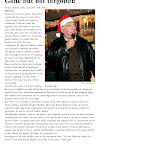

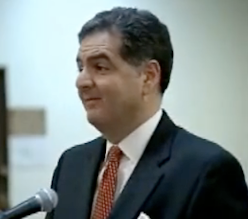
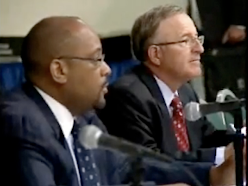
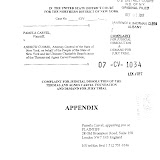
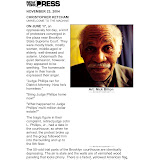

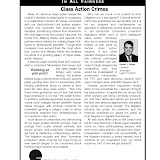

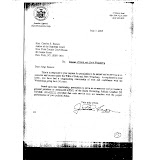
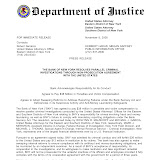
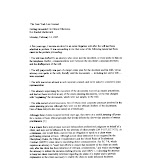
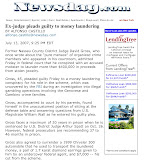
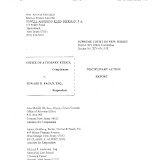
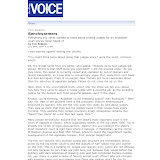
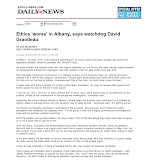
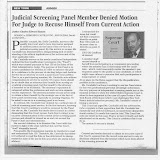

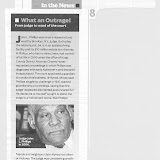
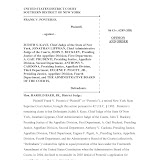
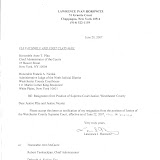
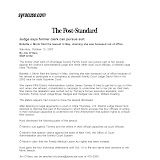
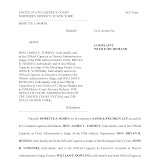

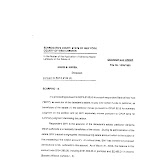
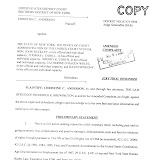
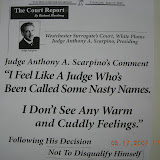
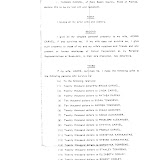
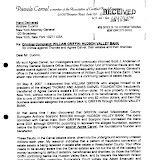
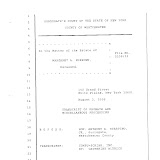
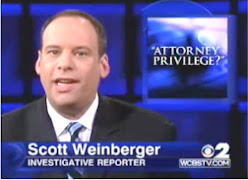
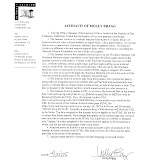
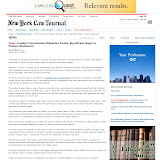
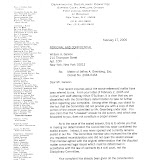
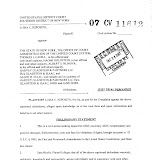
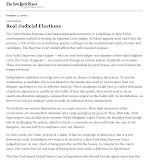
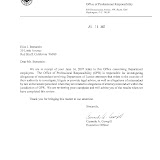
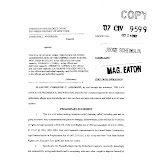
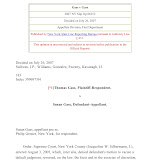
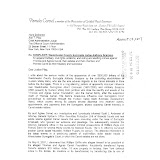

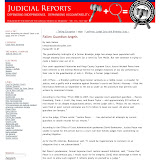
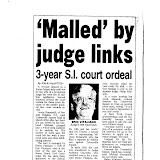
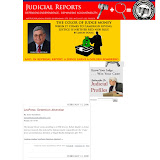
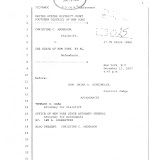
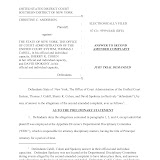
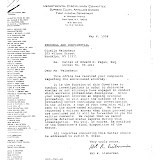
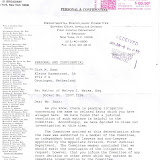
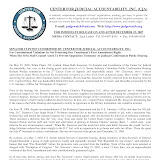

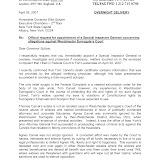
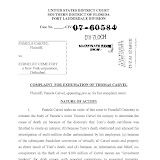
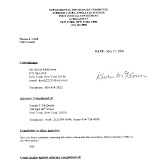
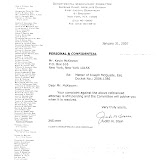
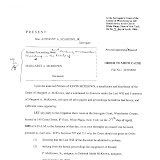
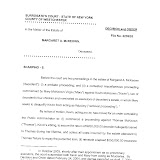
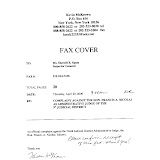
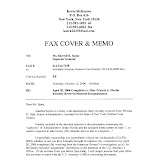
6 comments:
It's disgraceful how we view those in most need of proper legal assistance. Shame on all of us for the amount of humans wrongly imprisoned.
The court and its officers of the court,the DA and defense attorneys are running a criminal fraud racket where justice is denied, but fraudulently promised. All are guilty as co-conspirators. They've confirmed their reservations in Hell.
taking you claim for personal to the court is usually time consuming, stressful and most of all expensive and sometimes the process is not really that worth it. find someone who can really offer a service which is designed to do the claim for your personal injury directly and fast. find out more: no win no fee cases
This will be great for me and my public health class. We just started discussing malpractice cases and ways that healthcare professionals perform unethical practices. We had a guest speaker last week that discussed the drop in Pennsylvanian malpractice cases in the last 10 years to 46%. This Philadelphia Medical Malpractice Lawyer was very engaging. I hope that my professor will bring him back so I can show him this post.
Sad this is how it goes. There are too many Criminal Injury Claim but there are some who still waiting for their justice.
Now that the Fed’s successful caught up with a few Ponzi scammers from Wall Street, perhaps Governor Cuomo and Attorney General Schneiderman will welcome the Fed’s talent to shut down local trial lawyer Ponzi’s, especially those trial lawyer’s involved in corrupt land deals in the lower Hudson valley who defraud and shake down hardworking taxpayers and senior citizens who truly need protection from local criminals/racketeers, Ponzi, confidence trick and scams and unlicensed contractors that the DA and consumer protection refuses to handle.
It is all about accountability and leadership and now NYS has both with Governor Cuomo and AG Schneiderman with the momentum towards justice and liberty for honest persons and to save tax payers money from frivolous litigation expenses. They have made great strides, but there is more work to be done. Together, they’ll make 2013 another banner year to fight corruption.
Post a Comment